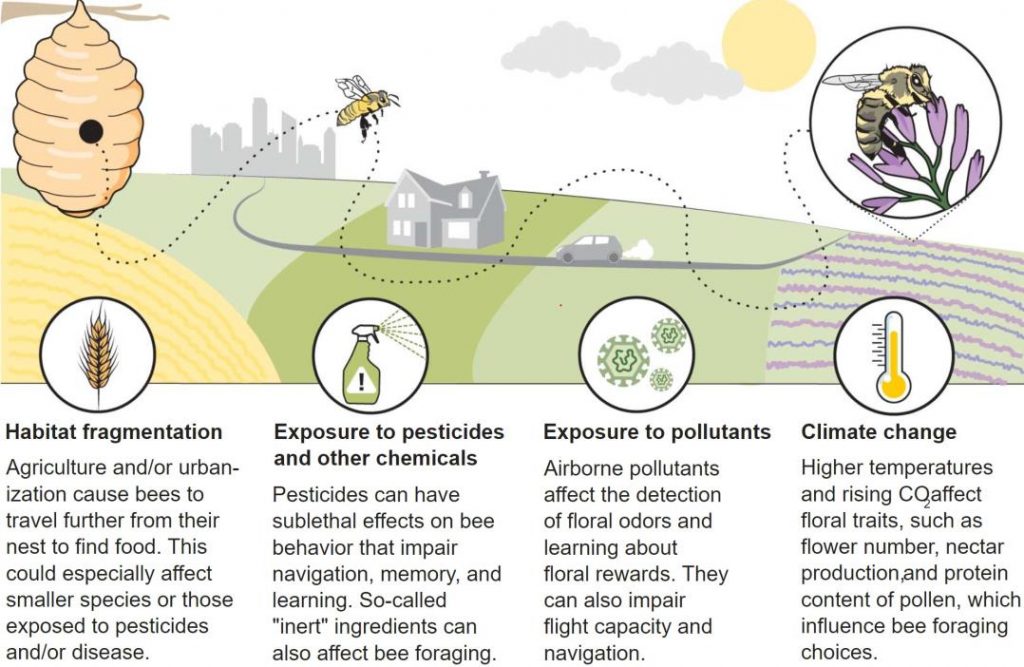Dave Goulson and Elizabeth Nicholls
SCIENCE 2022 Vol 375, Issue 6584 pp. 970-972.
https://www.science.org/doi/10.1126/science.abn0185
Bees are highly specialized insects, feeding almost exclusively on nectar and pollen from flowers, and in so doing contributing substantially to the pollination of wild plants and crops. Flying to and from patches of flowers is energetically costly, particularly for relatively large bees such as honey bees and bumble bees that live on a knife-edge in terms of balancing their energy intake. Suboptimal foraging conditions can result in a net loss of energy over the course of a foraging trip. Bees have evolved numerous adaptations to efficiently locate and extract floral resources, including impressive learning, navigational, and communication abilities. These are key to their survival and successful reproduction, because the number of offspring that can be provisioned is determined by the food surplus adult bees can gather. However, these foraging adaptations can be affected by anthropogenic factors, but there are opportunities to minimize negative effects.


